Cedarwood Waxcap
One of the lookalikes of Snowy Waxcap (Cuphophyllus virgineus), but usually a bit smaller, more cream-buff in colour, and has a distinctive cedarwood smell.
| Mushroom Type | |
| Common Names | Cedarwood Waxcap (EN), Cap Cwyr Cedrwydd (CY), Kopułek Juchtowaty (PL) |
| Scientific Name | Hygrocybe / Cuphophyllus russocoriaceus |
| Synonyms | Hygrophorus russocoriaceus, Camarophyllus russocoriaceus, Hygrocybe russocoriacea |
| Season Start | Nov |
| Season End | Feb |
| Average Mushroom height (CM) | 1–4 |
| Average Cap width (CM) | 0.5–3 |
Cap
0.5–3 cm. First hemispherical, then convex, becoming more or less flat with age; the centre of the cap is often depressed. Ivory-white or cream-buff, more or less translucent when wet, paler and opaque when dry (hygrophanous) and somewhat greasy, with a translucent, striated margin.
Stem
1–4 cm long, 2–4 mm diameter. Cylindric, often curved, tapering at the base, sometimes hollow, smooth or fibrous, concolorous with the cap and often with a pinkish tinge at the base.
Flesh
Thin, pale, watery-white.
Habitat
On unimproved, short, regularly mowed or grazed, mossy grasslands, including parks, churchyards, cemeteries, pastures, etc. Growing solitary, in smaller or larger groups, sometimes even forms a fairy ring.
Possible Confusion
Snowy Waxcap (Cuphophyllus virgineus), pictured, looks rather similar and grows in the same habitat as Cedarwood Waxcap, but it doesn’t have any particular smell.
Taste / Smell
Inedible. Taste unknown or not distinctive, smells strongly of cedarwood, sandalwood or Russian leather.
Frequency
Occasional to fairly common in the UK.
Spores
Spore print is white. Spores are ellipsoid, smooth and colourless (hyaline).
Other Facts
The epithet (the 2nd part of the scientific name which indicates the species within the genus) refers to the resemblance of its smell to Russian leather, because Russo– means Russian, corium means leather, coriaceus means leathery or leather-like. Nowadays we more likely associate its scent with the odour of cedarwood or sandalwood.


 (2 votes, average: 4.50 out of 5)
(2 votes, average: 4.50 out of 5)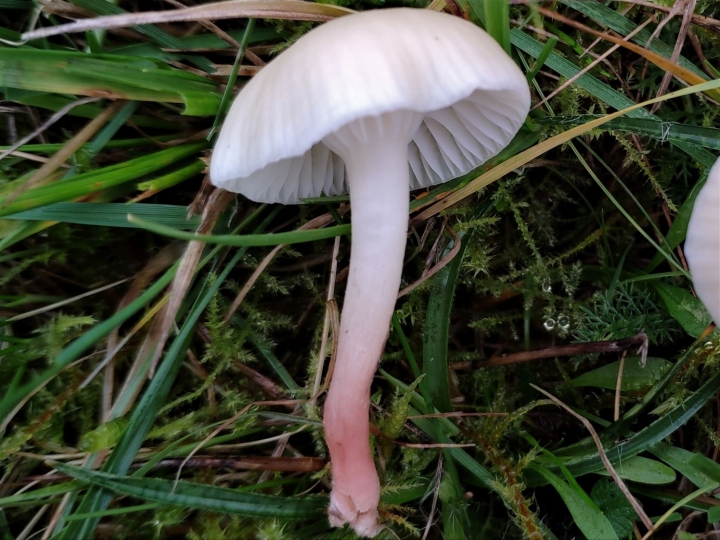












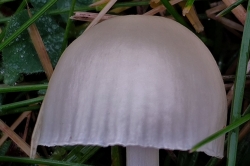
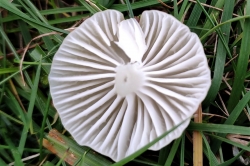
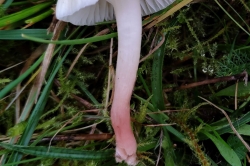
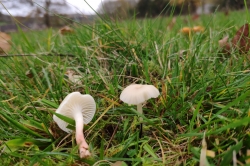
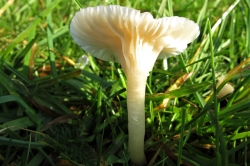





COMMENTS